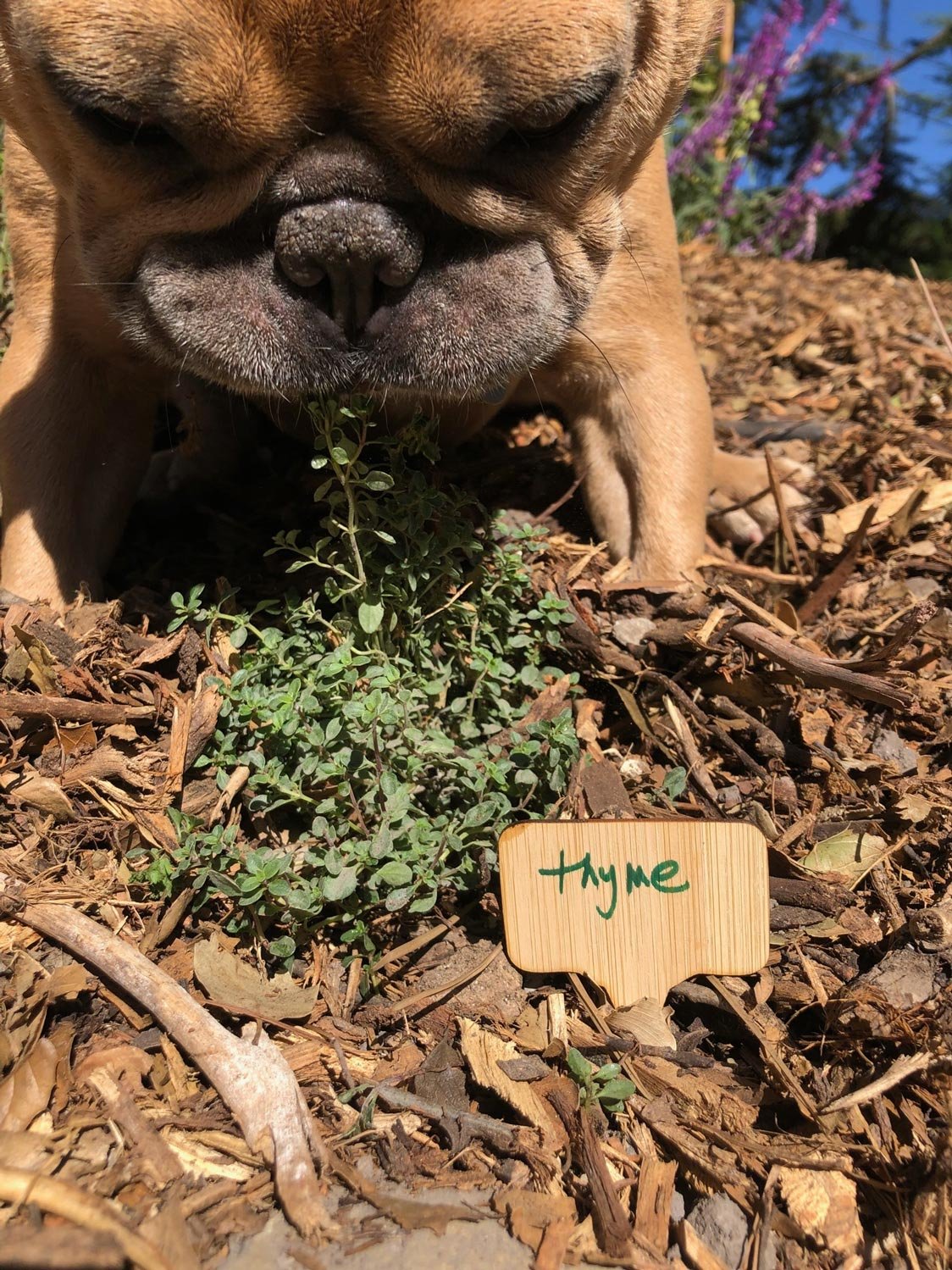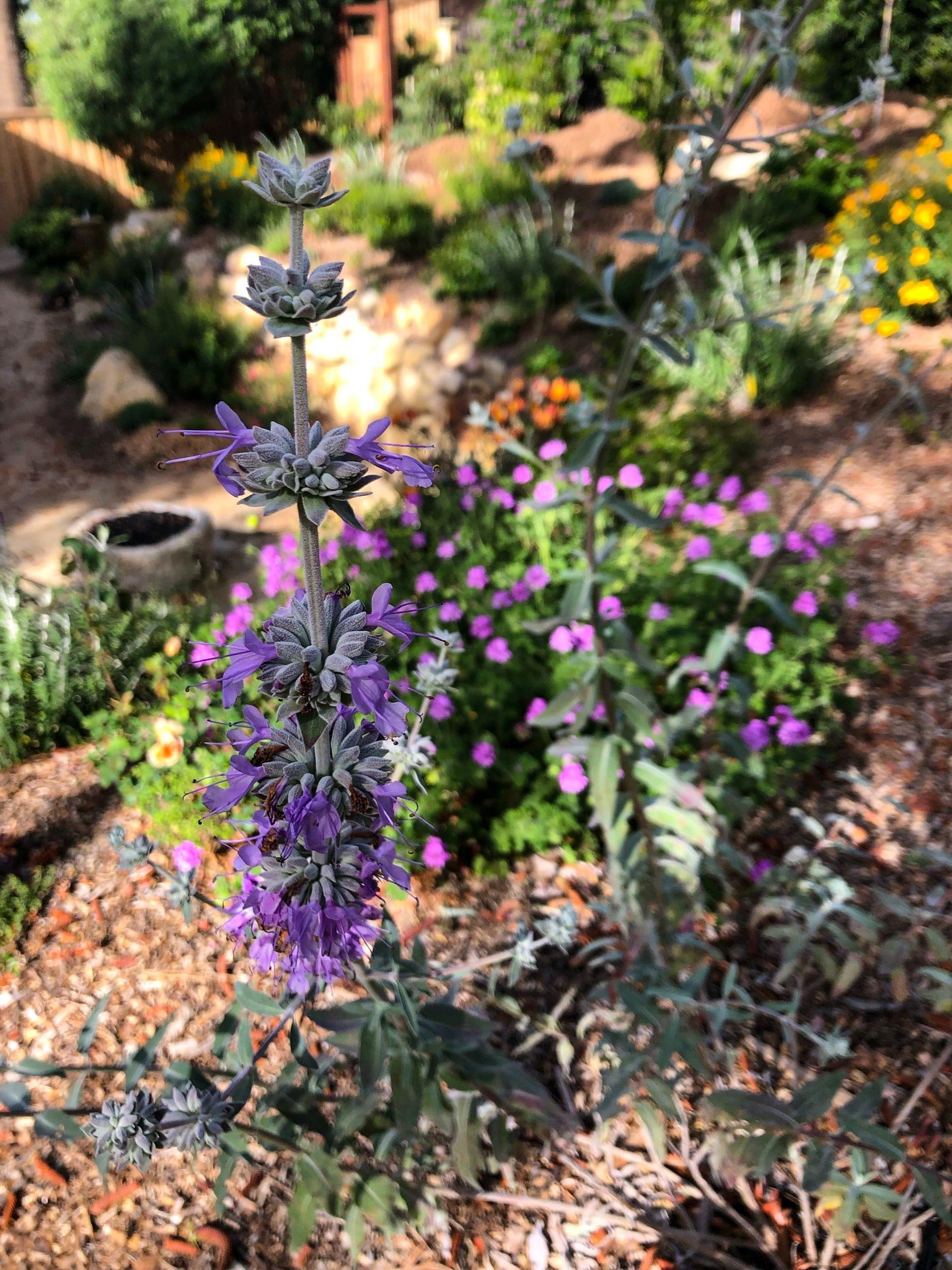Garden Design with Kids and Pets
Kids and pets can be a challenge in any garden, but don’t despair. The two can work together in harmony.
Kids Pets and Gardens
Is it possible for a garden to be beautiful and kid and dog friendly? Or are gardens, kids and dogs mutually exclusive? Images of flying soccer balls, crushed plants and dog bones buried under prize roses come to mind. Don’t stress over your trampled topiary, instead design a garden that includes everyone. With some careful planning, a few compromises and reasonable expectations, it can be done.
It Starts with a Plan
You already know what your kids like to do, so incorporate this into the design. Of course, the size of your property does have some bearing on what is possible, but even small gardens can become a kid-friendly space. It can be as simple as a spot amid the trees turned into secret hiding place or creating a meandering mulch pathway through the garden where they can run through the garden with wild abandon.
Mulch paths are better for small kids because a deeply mulched path is soft, so they won’t hurt themselves when they inevitably take a tumble. There could be more obvious constructed elements, such as a swing, or a treehouse, but it doesn’t have to be. If there is room and the kids play soccer or other sports, a lawn could be on the agenda; if the family likes to golf, there could be a pitch and putting green.
We installed a zip line in one backyard and hid the mounting platforms within a cluster of trees. There was the garden designed for a woman whose granddaughter loved to pretend she was in a steeplechase (no real horse involved) so we created a course complete with logs to jump over and other fun stuff.
There was the family who liked to play bocce ball. However, a standard court wasn’t feasible, so we created a “cross-country” bocce ball court that meandered through the entire back yard complete with banked turns. It was lined with plants that can withstand the abuse of repeated bocce balls and the entire family plays bocce out there every night. Have some fun and get creative, anything goes. We have lots more examples; if you need inspiration, email me!
Plants? Choose Edible and Non-Toxic
If your children are very young, they are likely to put leaves and flowers in their mouths, so you had better stay away from toxic plants. I like to use soft, edible plants when a family has small children. If you must have a rose garden, place it away from where the kids play. In one case I planted an entire garden full of stuff the kids could eat: culinary herbs, blueberries, passion fruit, alpine strawberries, and fruit trees. This was a garden the kids could munch their way through.
Plants That Can Take Abuse
If you have dogs and kids they may run, trample, dig and eat the plants in your garden. Fortunately, there are lots of plants that can take the abuse and still thrive in Santa Barbara. Mexican sage, Falkia, Nepeta, Teucrium, Lavender, Rosemary, Santa Barbara Daisy, Shasta Daisy, Boxwood, Pittosporum Tobira, Geraniums, Mint, Potato vine, Mexican Marigold are sturdy and beautiful.
Flowers are for picking
In my experience kids love to pick flowers-as they should! A garden full of repeat bloomers such as Ivy geranium, Mexican Marigold, Lavender, Sages, scented geranium, violets, hibiscus, fruits and roses continue to produce flowers all year round and are safe for kids.
Plants to avoid
Unfortunately, some very popular “designer” plants are extremely toxic to kids, dogs and adults alike. Euphorbia is particularly nasty and poisonous, there are several cultivars you may be familiar with: ‘sticks on fire’, ‘pencil cactus’, ‘crown of thorns’ to name a few. ALL Euphorbia are toxic to humans and animals. You don’t have to ingest Euphorbia for it to cause a trip to the emergency room.
Another variety of Euphorbia placed along this pathway can be dangerous due to its poisonous sap
The sap can cause burning of the skin and swelling in humans and animals. The ASPA recommends avoiding ALL Euphorbia species if you have pets, and the same is true if there are kids. Don’t use spiny plants for obvious reasons and stay away from poisonous ones like Oleander and Lantana which are toxic if ingested.
Our Furry Friends
Securing your garden to keep pets from wandering is very important; you don’t want an adventurous pup to squeeze through a hole in the gate or fence. Dogs are bred with certain traits, digging, herding, guarding, etc. so just because you have a new garden, don’t expect them to change, they won’t. Before you landscape, be aware of your dogs’ habits. He will have a route he takes through the garden; he has a favorite place to cool off or to rest. If you know where he likes to dig or hang out or run, plan your garden with this in mind. You dog will not find a new route or hiding place just because you relandscaped so design around him.
Cleveland Sage in this pet-friendly Montecito garden can help keep pets flea and tick free
Pro Tip: If you have dogs, plant lots of Lavender, Mexican Marigold, Cleveland Sage, White Sage, Rosemary, Mint, Catmint, Oregano, Marjoram, Lemon Balm and Lemongrass. All these plants contain oils that naturally repel fleas. Encourage your dogs to romp in these plants to help keep fleas at bay. Plus, these plants thrive despite abuse and are safe for kids and adults.
Set reasonable expectations
Set reasonable expectations. You kids won’t always be young, and your dogs will hopefully get into a routine. A garden is to be loved and enjoyed and if a few plants get ruined because of some rambunctious play time, oh well. We design gardens to be lived in and life is sometimes messy! Rejoice in the mess and adjust expectations to suit your family’s needs. Once the kids are gone; off making lives of their own, you’ll likely miss the chaos. So, enjoy it while you have them.
Until next time, fill your garden with joy, life, pets and people! xo Lisa












